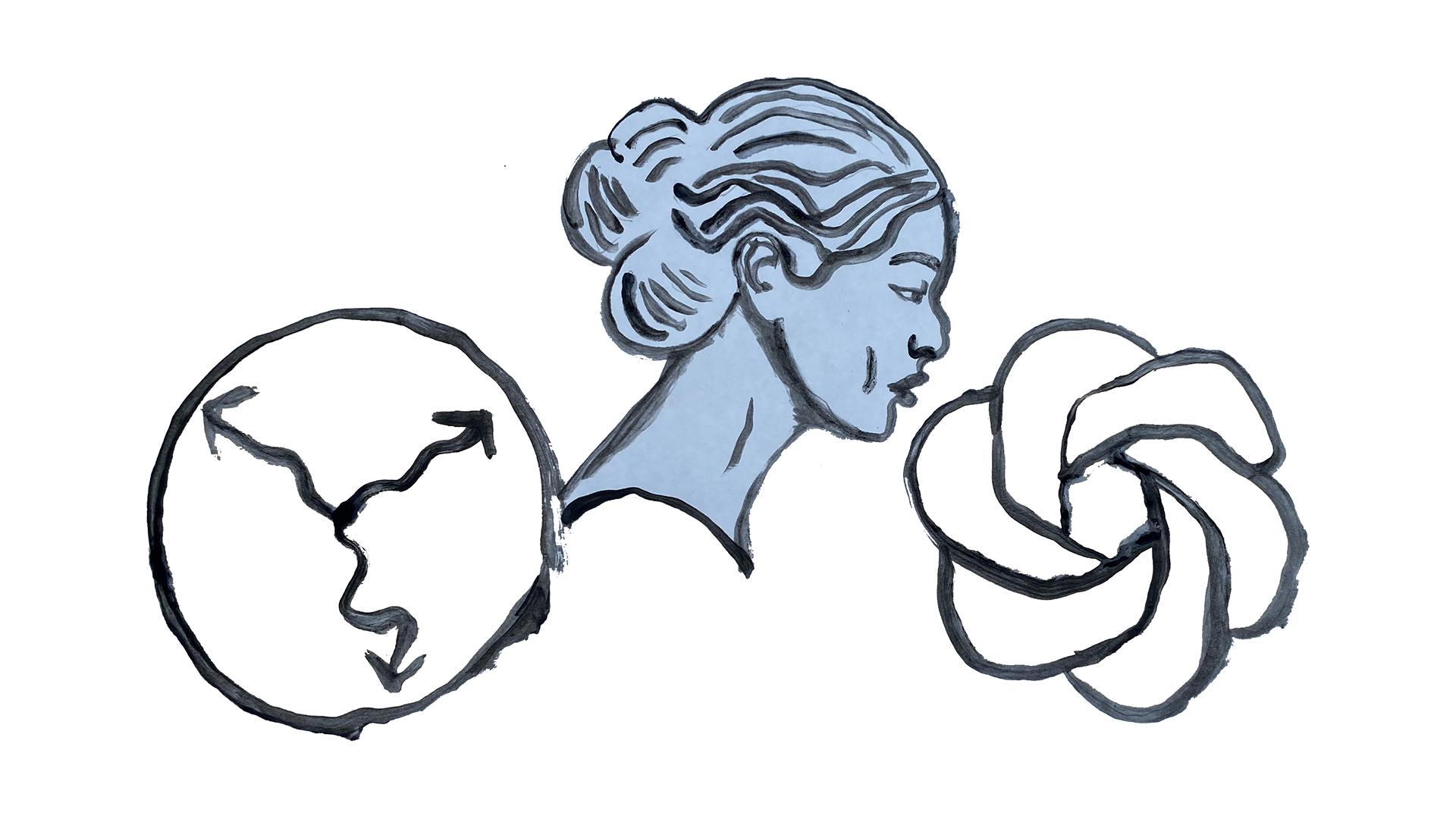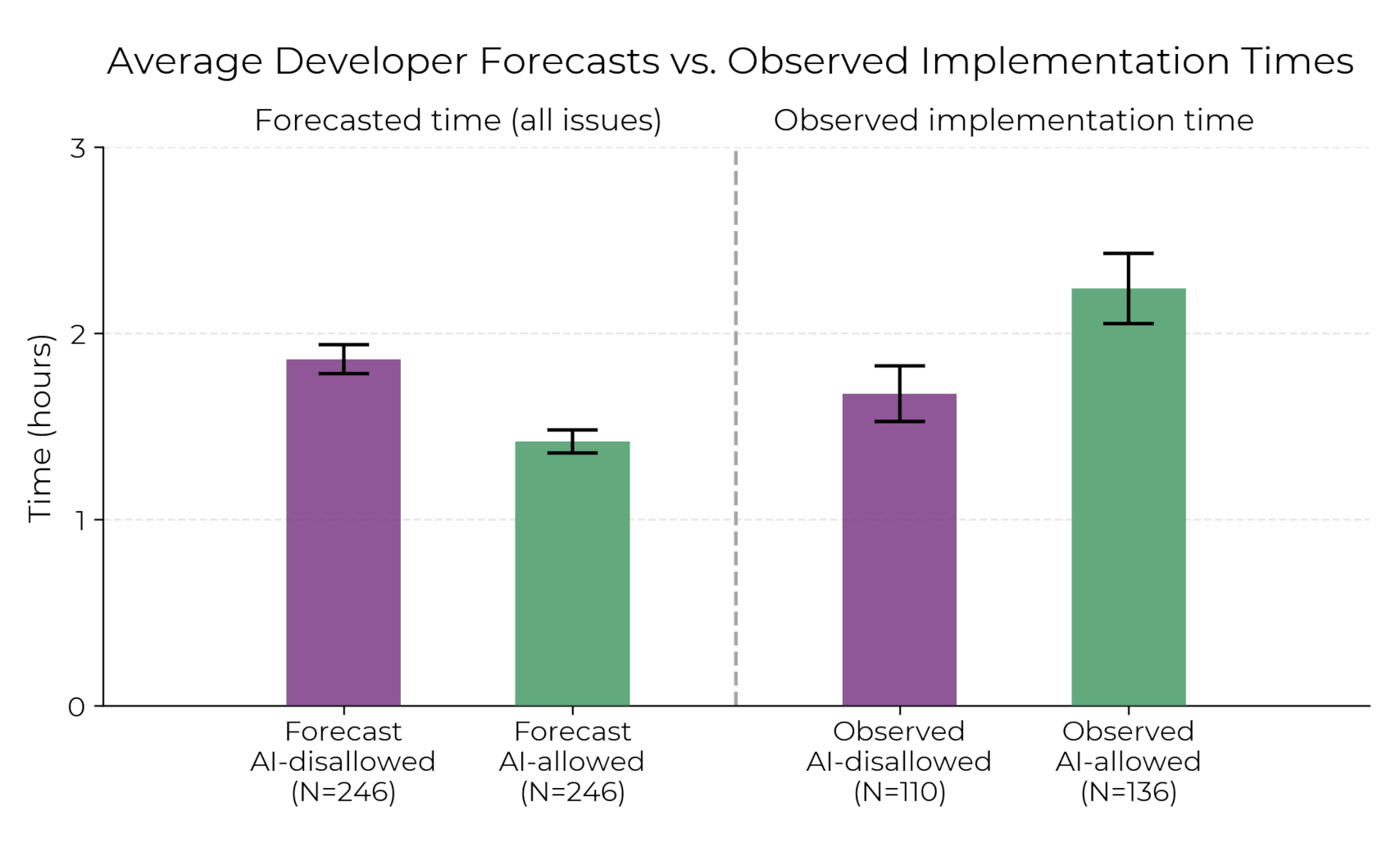The Emotion At Work That Leads Humans To Hallucinate AI Productivity
We’ve all heard that generative AI enhances productivity by enabling people to get work done at a faster pace. Is this common knowledge accurate, though? Fascinating new research suggests that businesses should think twice before integrating generative AI into the workplace.
The study, conducted by METR (Model Evaluation & Threat Research) documents a specific circumstance in which humans imagine generative AI productivity gains where they do not exist.
Humans Hallucinate AI Productivity
The METR study doesn’t represent all of the diversity of human-AI interaction, of course. No research into the impact of generative AI tools on human productivity has achieved anything close to that scale of inquiry. However, the findings of the newly released METR study show that people who regularly use generative AI tools are capable of dramatically exaggerated perceptions of the ability of generative AI to speed up their work.
The subjects of the study are no Luddites. They are highly-experienced software developers who have extensive familiarity with generative AI.
Roughly speaking, the research design had three steps. First, the software developers were asked to predict the percent by which using generative AI tools would speed up or slow down their work.
Second, the developers were given a series of tasks that are commonly included in their work, for which the developers could use generative AI tools. At random, the developers were either allowed to use AI tools on a task, or were forbidden from doing so. Their work was recorded through screen capture, enabling the researchers to measure how much time each task actually took, and to assess how developers performed during different parts of each task. Developers were allowed to choose which generative AI tools to use, and were given AI tools that they were familiar with.
In the third step, after the tasks were complete, the developers were asked to estimate the percent by which generative AI tools had sped up or slowed down their work.
Additionally, before the experiment began, economics experts and experts in machine learning technology were asked to make predictions of the impact that generative AI tools on would have on the pace of developers’ work.
All of the developers predicted that the generative AI tools would speed up their work. All of them were wrong. All of them overestimated the ability of generative AI tools to enhance their productivity.
This chart, from METR, shows the discrepancy:
The reality documented by screen capture showed that all of the developers’ predictions were wrong. Not a single one of the developers actually became more productive while using generative AI tools. Screen capture data showed that work was slowed down by the time that developers spent correcting mistakes in generative AI output.
In fact, generative AI tool use slowed down all of the developers’ work. With some, the loss in productivity was just by a couple of percent, but the maximum slowdown was 40%. The average slowdown in software developers’ work was 19%. On average, they had predicted that generative AI tools would enhance their work rate by 24%
Economists and machine learning experts were even more inaccurate than software developers. Economists gave an average estimate of a 39% percent increase in productivity, and machine learning experts were right behind at 38%.
Everybody thought that generative AI would help make the work of software developers faster. Everybody was wrong.
The final twist in the research findings is that when software developers were asked, at the end of the working period, to estimate the impact of generative AI tools had just had on the pace of their work, they reported, incorrectly, that generative AI tools had significantly accelerated their productivity.
They thought they were working faster, even though they were getting through tasks more slowly.
The Emotion Of Human Work
The error wasn’t just a matter of overestimating the abilities of generative AI. As the chart below shows, software developers underestimated their own abilities as well.
Just as they misjudged the ability of generative AI to assist in their work, software developers believed that they would work at a pace that was slower than what they actually achieved. Their assumptions had a distinct pro-AI, anti-human bias.
Why?
Developers’ perceptions of the abilities of generative AI were irrationally optimistic, and that’s an important finding in itself. However, the consistency of their irrational perceptions leads us to an even more important revelation about what’s driving widespread adoption of generative AI tools in professional settings.
Generative AI tools changed the experience of work so that work felt more productive even as it was less productive. That’s a shift in subjective perception, divorced from objective external reality. In other words…
…the use of generative AI tools changed people’s emotional interpretation of work.
The experience of time passing while at work is relative to our emotional relationship to the work we do. That’s why time seems to pass slowly while we’re “watching the clock”, looking forward to getting away from our work. On the other hand, as the popular aphorism puts it, “time flies while you’re having fun.”
The more we feel like we’re having a good time while at work, the faster time seems to pass. The more we focus on the burden of work, the slower time seems to pass. The way that developers felt while doing their work warped their perception of the time that it took to complete their work.
Our emotions warp our perception of time, and the use of generative AI in our work alters our emotional frame of mind.
Specifically, generative AI increases the perceived pace of the passage of time by introducing an element of gamification to work. Generative AI tools also increase the perceived pace of work by decreasing the emotional burden of work by enabling workers to avoid focusing on the experience of working.
Humans overerestimate the slowness of our work because we experience that difficulty firsthand. We perceive work as an emotionally draining experience. Work often makes us feel weighed down and held back, especially when there are slow, challenging tasks standing in the way of of the work we’d really like to be doing. We feel sluggish when we’re engaged with these tasks.
Generative artificial intelligence tools specialize in replacing our involvement in the sluggish tasks that we perceive as obstructive. In this context, generative AI services seem perfectly designed to provide people with a distorted sense of time, making us feel as if we have been accomplishing work more quickly, even when AI objectively makes us less productive.
Generative AI doesn’t just deceive us. It also undermines us. Those slow and challenging tasks of our work, the ones that general AI seems to take care of for us, are essential to our ability to work competently and coherently, across all tasks.
The slow, frustrating process of working through difficult tasks is what forces us to think about the details of our work. When we struggle to write the language of a strategic analysis or we take time to create an image that represents our abstract ideas, we are engaging in an exercise that tests the coherence of our thoughts. Putting our thoughts and visions into concrete form, and doing it ourselves, forces us to reconsider what we think we know, and how we want to communicate it with others.
When we get out of practice thinking our own way through the processes of our work, our cognitive capacity gets out of shape. The more we outsource our tasks to generative AI, the more effort it takes to think through our work.
Generative AI tools cause us to hallucinate a world in which we can get more work done with fewer resources. It’s a new version of a classic delusion in business, the belief that a busier office is a more productive office.
We now have experimental research showing that people are capable of maintaining a faith in generative AI’s usefulness, in spite of their firsthand experience with work being slowed down because of the technology.
If we learn nothing else from this new research, it should be this: We cannot accept subjective perceptions of the business capabilities of generative AI tools at face value.
We may feel as if we are getting more work done with generative AI, but then, we are living in an age of illusion.
Instead of accepting the illusion of the acceleration of work through generative AI, we should reawaken our still-uniquely-human capability of critical thinking. We should ask for hard proof that this technology actually provides the advantages that have been promised.
In practice, generative AI has not proven to be a reliable source of profits. According to an analysis by RAND, “more than 80 percent of AI projects fail — twice the rate of failure for information technology projects that do not involve AI.”
We need to understand why AI-centered businesses fail so frequently before we lead our businesses even deeper into dependence on generative AI.
We cannot afford to put the world of work into the hands of generative AI on the basis of nothing but vibes.


